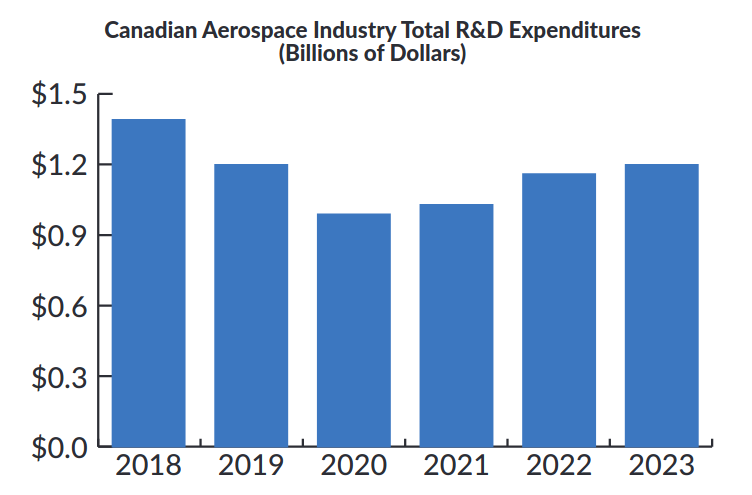Unifor is calling for a coordinated national aerospace strategy to safeguard Canada’s position in the global aerospace sector and secure thousands of jobs for the next generation of workers.
In a newly released report titled Building for the Next Generation: A Workers’ Strategy for Canada’s Aerospace Industry, the union outlines key challenges facing the aerospace sector, including increased competition from emerging markets, declining research and development (R&D) investment, and the erosion of Canada’s wage advantages in the industry.
“Aerospace is a crown jewel of Canada’s industrial economy,” said Unifor National President Lana Payne in a statement. “We have the skilled workforce, the research capacity, and a world-class regulatory environment, but without a clear national strategy, we risk losing good jobs and economic benefits to other countries.”
The report emphasizes that Canada’s aerospace industry plays a critical role in the country’s economic development, supporting tens of thousands of direct jobs, leading R&D efforts in advanced manufacturing, and maintaining a favourable trade balance. However, Unifor warns that without coordinated action, the industry’s growth and competitiveness may be at risk.
One of the report’s key recommendations is the creation of a national aerospace industrial strategy. This strategy would involve collaboration among government, unions, academia, and aerospace companies to identify gaps, set attainable goals, and prioritize resources to maintain Canada’s status as a hub for research, development, production, and maintenance.

Globally, the demand for civil, defence, and space-related aircraft is expected to grow substantially over the next decade. Canada, one of only a few countries with the full capacity to design and build aircraft, is well-positioned to capitalize on these opportunities, the report notes. However, the country has faced challenges, including a 15% drop in R&D spending in the aerospace sector between 2018 and 2023 and a 20% decline in aerospace GDP since 2018, according to Unifor.
The union is also calling for greater efforts to attract and retain a skilled workforce, ensure the benefits of technological changes, and increase public procurement to support the sector. “We need a strategy that ensures new aerospace jobs are good, union jobs and that we support workers with the right training and benefits to build the next generation of aircraft and space technologies,” said Payne.
Unifor’s report outlines four main pillars to guide the development of the industry: a strategic framework for stakeholder collaboration, workforce training and adaptation, support for the Canadian aerospace ecosystem, and targeted investments. The union argues that such a strategy would help Canada navigate global competition while creating thousands of jobs and sustaining economic growth.
The aerospace sector currently supports more than 600 companies across Canada, with a major hub in Montreal, which is ranked as the third-largest aerospace cluster in the world. However, Unifor’s report highlights the growing competition from other regions, particularly in China, the United States, and India, all of which are making substantial investments to attract aerospace manufacturing.
Without coordinated action, Canada’s aerospace sector risks losing momentum, the report warns. “We can’t afford to let this economic engine falter. It’s time for government, industry, and labour to work together to build a national strategy that secures Canada’s aerospace future,” Payne added.
Unifor’s policy recommendations include creating an Aerospace Industry Development Council, enhancing R&D support, and ensuring Canada remains a leader in areas such as sustainable aviation technology and space exploration.
The union’s vision calls for a vibrant and resilient aerospace ecosystem, underpinned by a skilled and supported workforce, with a clear strategy for growth and innovation in the face of global challenges.

Unifor’s key recommendations for Canada’s aerospace industry
- Create a National Aerospace Industrial Strategy
- Develop a comprehensive framework to guide the growth of Canada’s aerospace sector, with clear goals and priorities.
- Establish an Aerospace Industry Development Council
- Foster collaboration between government, unions, academia, and aerospace companies to address industry challenges.
- Increase Workforce Attraction, Training, and Adaptation
- Develop strategies to attract new workers, provide high-quality training, and ensure technology benefits workers.
- Support and Expand the Aerospace Ecosystem
- Strengthen innovation, supply chains, and SME resilience; promote made-in-Canada solutions for civil, defence, and space sectors.
- Boost Public Procurement and Industry Funding
- Use public procurement to stimulate domestic aerospace growth and secure targeted funding for R&D and industry expansion.
- Protect and Expand Employment Quality
- Ensure that aerospace jobs remain high-quality, well-paid, and unionized through legislation and workforce development.
- Reinvest in Research and Development
- Increase government funding for R&D to sustain Canada’s competitive edge in emerging aerospace technologies, including sustainable aviation.
- Create a “Service-in-Canada” Policy
- Ensure maintenance, repair, and overhaul (MRO) activities for government aircraft are performed by Canadian firms to support local jobs.
- Address Technological Transitions
- Develop robust training programs to upskill workers and integrate new technologies without job losses.
- Strengthen Export and Supply Chain Resilience
- Promote Canadian aerospace products internationally and build stronger supply chains to withstand global disruptions.






